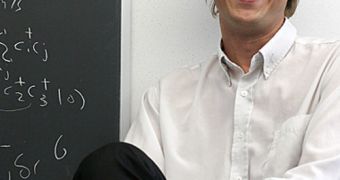Practical quantum networks may not be too far away, thanks to new advancements made in the field of quantum physics at the Harvard University. Experts here managed to connect photons – the basic particles that make up light – and solid-state materials for the first time. The achievement demonstrated that qubits (quantum bits) can be linked together and become capable of communications over very large distances. This is the first time such a demonstration is made.
“In quantum computing and quantum communication, a big question has been whether or how it would be possible to actually connect qubits, separated by long distances, to one another. As the first demonstration of quantum entanglement between a solid-state material and photons, our work is an important advance toward linking qubits together into a quantum network,” says Harvard physics professor Mikhail D. Lukin, who was the leader of the research team.
The expert and his group detail their findings in the latest issue of the top-notch scientific journal Nature. Quantum computers are one of the main objectives in the fields of electronics and physics today, as they hold the promise to be incredibly fast. They can purportedly complete complex tasks a lot faster than regular computers due to the fact that their basic units, the qubits, take advantage of the quantum superposition principle. This means that the information they carry can be “1,” “0,” and “1 and 0” at the same time. Creating a stable, working prototype has proven to be extremely difficult, in spite of the fact that many of the world's best minds are working on making this a reality.
Entanglement, the quantum property that allows atoms and particles to become linked with each other, has already been demonstrated with photons and individual ions or atoms. “Our work takes this one step further, showing how one can engineer and control the interaction between individual photons and matter in a solid-state material. What’s more, we show that the photons can be imprinted with the information stored in a qubit,” say Harvard graduate student in physics Emre Togan, who was the first author of the investigation.
The work was supported by the Defense Advanced Research Projects Agency (DARPA), the Harvard-MIT Center for Ultracold Atoms, the US National Science Foundation (NSF), the National Defense Science & Engineering Graduate Fellowship, and the Packard Foundation.

 14 DAY TRIAL //
14 DAY TRIAL //